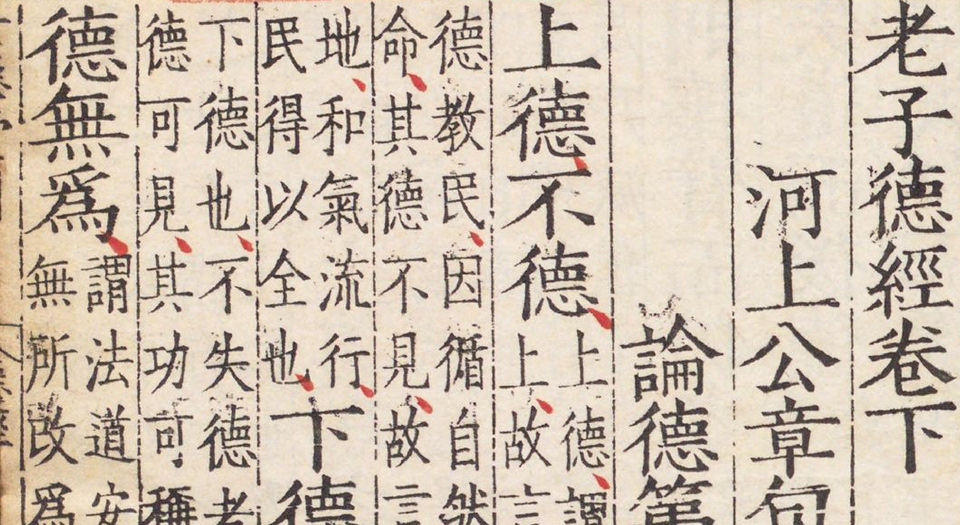Lao Zi
Lao Zi (lit. Old Master) is regarded in Chinese culture as the founding father of Daoism and author of one of the most translated books in the world: Dao De Jing. Another shortened name for the Dao De Jing is the Laozi or ‘The book of five thousand characters. According to legend, Lao Zi was born in the 5th century BC, a time companion of Kong Zi (Confucius), the Greek philosophers Socrates and Plato and Shakyamuni Buddha in India. Famous are the first lines of Dao De Jing: ‘The eternal Dao can’t be expressed in words. The eternal name cannot be named.’
Originally, the name Dao means ‘way’. Crucial in the Laozi is its focus on ziran which means ‘spontaneity’, or: ‘what naturally is as it is’. This is Dao. There is nothing to follow, not even the Dao, as everyone already ‘has’ Dao. Another key concept is wei wu wei which can be translated as ‘do without doing.’ It is like the seeds in the soil that sprout during spring and fructify in the summer, falling in the autumn and store in the soil in the winter. In modern terms: relax, connect with your inner self, and go with the flow.
Zhuang Zi
The Zhuangzi belongs to the oldest Daoist texts. It was written in the 4th century BC and the main author was Zhuang Zi or Zhuang Zhou. The book is un-Chinese for his time in the sense that Zhuang Zi describes stories about the ‘normal people’ like farmers and craftsmen. But also, the tone is unique as Zhuang Zi uses an unusual combination of satire and humor. He was a man who cherished his own freedom and independency and like many other Daoists refused to take up official positions. “Zhuangzi was once fishing beside the Pu River when two emissaries brought him a message from the King of Chu: “The king would like to trouble you with the control of his realm.” Zhuangzi, holding fast to to his fishing pole, without so much as turning his head, said: “I have heard there is a sacred turtle in Chu, already dead for threethousand years, which the king keeps in a bamboo chest high in his shrine. Do you think this turtle would prefer to be dead and having his carcass exalted, or alive and dragging his tail through the mud?” The emissaries said: “Alive and dragging his tail through the mud.” Zhuangzi said, “Away with you then! I too will drag my tail through the mud!”
Zhuang Zi was a follower of Lao Zi and calls him in his book ‘Old Master’ or Lao Dan. He tells many stories about Lao Zi and the confrontation between him and Kong Zi, where the latter expresses his gratitude to him. Zhuang Zi in his writings focuses on free thinking and broad knowledge like the Dao, instead of rigidity and small thinking which he saw in Kong Zi and his followers.
Lie Zi
The third and youngest book in the Daoist canon is the Lie Zi. The figure Lie Zi – his full name would have been Lie Yukou – is being mentioned in the first chapter of the Zhuangzi. There he is mentioned as a Daoist with magical powers who could ride the clouds. According to historian Huangfu Mi was Lie Yukou his whole life a hermit. Like Zhuangzi and other Daoists in Chinese history he refused to hold an official position. The stories in the Liezi give insight in how to live according to the Dao. “My body is in harmony with my spirit, my spirit is in harmony with my qi, my qi is in harmony with my heart, and my spirit is in harmony with Nothing. [..] I don’t know if I know with my sense organs and my four limbs, or that I know via my heart, my belly and my organs: it is knowledge that comes naturally.”
Kongzi
Chinese buddhist masters
6 patriarchs, Xu Yun

